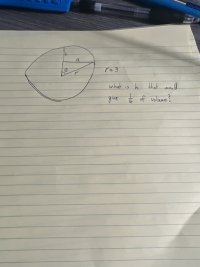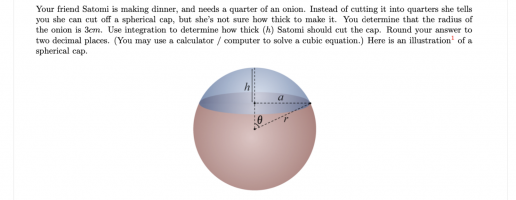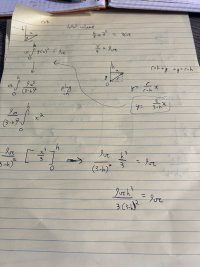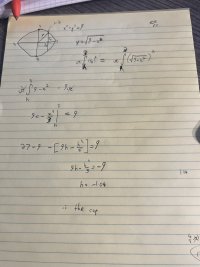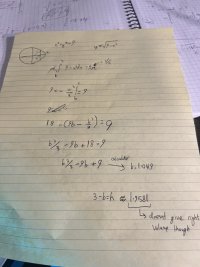Quick summary to make up for my terrible handwriting. So the question asks me to find the height (h) that will give me a quarter of the volume when I integrate. I know I have to get the volume into some type of form of integral of pi * r^2 but I am unsure of how to proceed. theta is not given so using a= r*sin(theta) doesn't help me much. I also tried setting r= h+ r*cos(theta) but that didn't help me much. Stumped on how to start this one so any help is appreciated thank you!